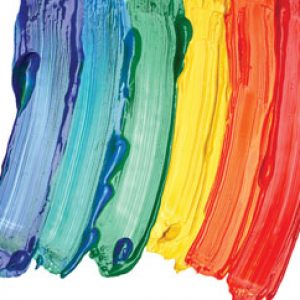Have you heard of this popular scam?
Someone goes into a store that sells gift cards and steals a stack of cards. Then, the thief scratches off the stickers from the back of each card, jots down the number and codes, then affixes new stickers (available for purchase) and surreptitiously returns the cards to the store. Next, they monitor the card numbers to see when the cards are activated (i.e. someone buys one), then drain each account before the card is used. So, for example, if you buy a $50 gift card to Macy’s and give it to your dad, he might try to use the gift card and find that there’s no money available.

So, what’s the solution? Mike Walsh, who is business development manager at SICPA, a global provider of ink-based security solutions for anti-counterfeiting and authentication technologies as well as a member of ICMA, said the problem is simple: thieves use replacement stickers that can be easily purchased online. SICPA’s innovation is embedding color-shift ink technology into the scratch-off material so the sticker changes color when viewed from different angles. Best of all, thieves can’t buy the material, so they can’t replace the stickers.
Color-shifting technology can also be used in different forms, particularly mag stripes on the back of credit cards. This adds another security element and, as an added benefit, enhances the look of metal cards, which keep gaining in popularity.
This was just one of the innovations that was highlighted during an Innovative Materials panel at the 2018 Card Manufacturing and Personalization EXPO. ICMA recently interviewed two of the panelists.
Fraud prevention can spur innovation, but so can environmental concerns. That’s the case with inks, where there’s a growing shift away from hazardous solvents and towards UV inks, according to Barry Gilbert, vice president of ICMA Member H.W. Sands Corp.
“The European Union is cracking down on a lot of the hazardous chemicals coming into the EU and the same thing is happening in California,” Gilbert said. “There’s a push to remove things that are known air pollutants. With UV ink, you get the benefits of faster printing because it cures instantly instead of having to dry, it’s not flammable, it’s easier to ship and the UV inks don’t break down as fast so there aren’t shelf-life concerns. A lot of companies are moving that way.”
One card printing trend that hasn’t yet been adopted, but will likely grow in popularity, is the emergence of light emitting diode (LED) printing. Just like the lights in your home, LED printing is the next generation of technology because it uses less energy, less power and because materials are not exposed to high temperature lamps means it’s unlikely to damage or cause other material surface problems on the card, according to Walsh.
Card manufacturing continues to evolve with new innovations and it is important to stay in touch with the latest advances through educational articles and events.
Want more?
For three decades, ICMA has represented the interests of the card manufacturing industry—which includes manufacturers, personalizers, issuers and suppliers—as its leading global association.
ICMA maintains several training and education programs about card manufacturing for members and hosts conferences throughout the year. Training includes the Advanced Card Education (ACE) program and the main conference is the Annual Card Manufacturing & Personalization EXPO.
